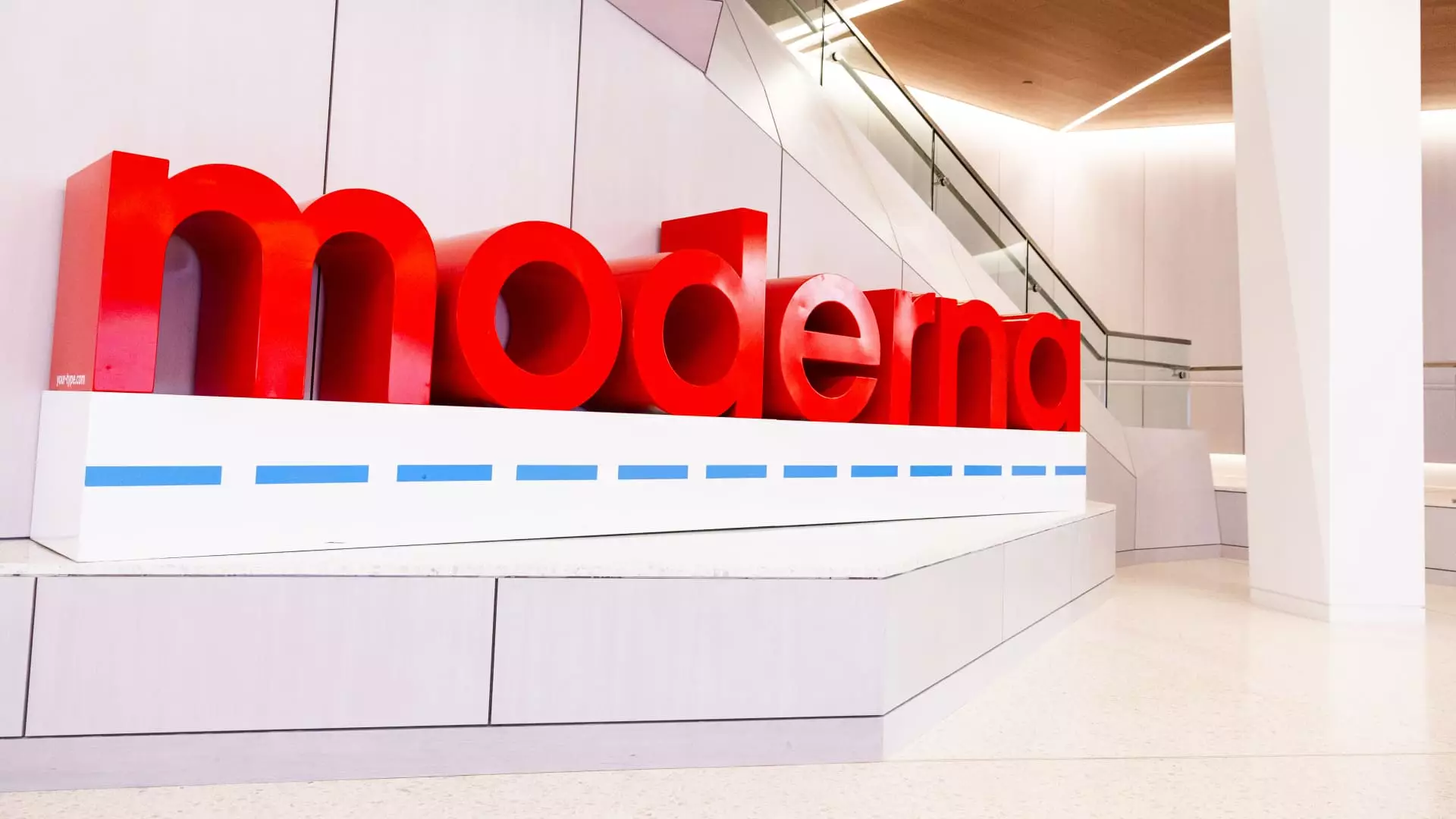As Moderna navigates the shifting landscape of the biopharmaceutical industry, it has recently reported an unexpected profit for the third quarter of the year. This financial turnaround is characterized by a remarkable achievement of $13 million in net income, or 3 cents per share, contrasting sharply with the staggering $3.63 billion loss, approximately 9.53 cents per share, incurred during the same period last year. This article delves into the implications of Moderna’s latest performance, its ongoing cost management strategy, and the broader trends influencing its future trajectory.
Moderna’s ability to post a profit in an era marked by declining sales from its COVID-19 vaccine is largely attributed to aggressive cost-cutting measures. The company has outlined ambitious plans to save $1.1 billion by 2027, reflecting a strategic pivot as it grapples with the diminishing sales from its flagship vaccines. This sustainable approach to managing expenses is crucial, especially given the volatility the company faces in the wake of pandemic-induced shifts in vaccine demand.
Moderna’s third quarter marked a significant shift, as it included sales from its first-ever RSV vaccine, expanding its product portfolio. Achieving profitability amidst such upheaval is no small feat, suggesting that the company’s efforts to streamline operations and focus on efficiency are beginning to pay off. However, while the immediate results are favorable, it remains to be seen if this newfound profitability can be sustained as the market for COVID-19 vaccines progresses into more competitive and potentially saturated territories.
One of the key drivers of Moderna’s surprising sales performance this quarter has been the early approval of its latest COVID-19 vaccine. By obtaining regulatory clearance three weeks ahead of prior timelines, Moderna was able to capitalize on pent-up demand more effectively than in previous launches. According to CEO Stéphane Bancel, the quicker rollout facilitated the shipping of doses to pharmacies and healthcare providers at an accelerated pace, leading to a notably higher sales figure.
Sales from its COVID-19 vaccine constituted the lion’s share of its revenue, generating approximately $1.2 billion in the United States and around $600 million internationally. However, the introduction of its RSV vaccine garnered less than anticipated sales—totaling only $10 million—due to its late approval in the contracting season. This fosters a discussion around the challenges of launching new vaccines within crowded and strategically complex markets where health authorities and distributors already have set contracts.
Looking forward, Moderna has not just maintained its guidance for overall product sales but is also positioning itself for growth with key strategic initiatives. By aiming to bring forth various experimental vaccines before year-end—including an innovative combination vaccine targeting both COVID-19 and the flu—Moderna is making bold strides. This diversification of its product pipeline, facilitated by its messenger RNA technology, could be pivotal for its long-term sustainability.
Yet, despite these promising maneuvers, the company faces headwinds. For instance, the reaction of the market to its revised sales expectations—previously reduced on the back of competitive pressures in respiratory vaccinations—remains critical. Investors are clearly wary, as reflected in the stock price’s nearly 50% decline this year. This scenario underscores the urgency for Moderna to deliver continuous innovation and adapt to the evolving demands of its consumer base and healthcare providers.
Moderna’s third-quarter results reveal a biotech company at a crucial crossroads. By effectively managing costs and enhancing operational efficiency, it has recorded a surprising profit at a time when many expected continued losses. However, the sustainability of this performance will largely depend on how well it innovates and competes in an increasingly challenging vaccine market.
While the reported profits and strategic initiatives shine a hopeful light on Moderna’s future, the company must remain vigilant against market fluctuations and competitive dynamics. As it endeavors to expand its offerings and regain investor confidence, the path ahead will require not just innovation in products but also transparency and responsiveness to the market’s evolving needs.

